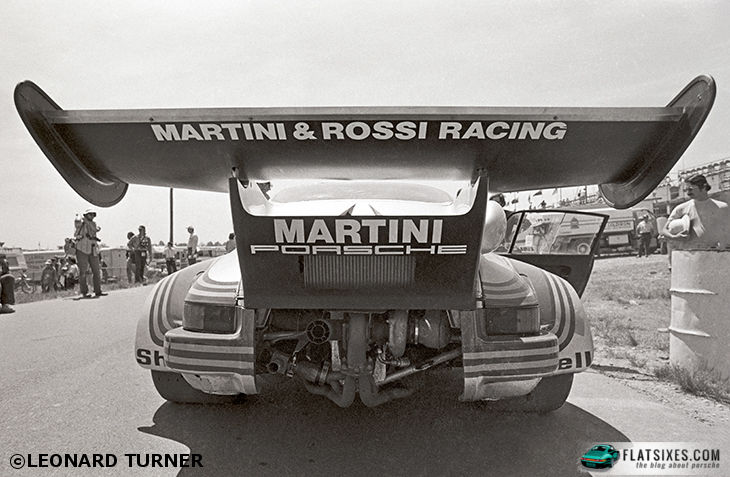One of the many happy bits of fortune I experienced over the years was the chance to see one of the four Turbo Carreras Porsche made run at Watkins Glen in 1974, the only year the factory campaigned this car. This most audacious looking 911RSR ran as a Group 5 car, which that year featured a 3 liter formula. With the 917 experience in turbocharging under their belt, Porsche accepted the displacement-reducing turbo penalty and produced a unique 2.142 liter engine. Relatively tiny displacement notwithstanding, the new flat six was able to utilize its intercooled compressed air breathing to produce a phenomenal 233 bhp/liter, for to total of 500 horsepower, good enough for almost 190 mph in spite of the bulging fenders covering the massive rear tires.

Most striking visually, though, was the huge and aerodynamically effective tail, aimed at making sufficient downforce to utilize the tremendous power; it was so prominent (even in images not conceived to emphasize this feature, as mine was), that efforts were made to conceal its optic impact with a paint scheme that Ludvigsen observed “was surprisingly successful.”
Racing first with an upright fan cooling the engine and later with a more effective flat fan, the Turbo Carrera had significant successes during its one-year lifetime, finishing second overall at both Le Mans and at this subsequent Six hour race at the Glen, even though it was not a particularly easy car to drive, with poor rearward visibility, turbo lag, and terminal oversteer. The blockage of the driver’s rear view was blamed for some incidents, and the handling is said to have dislocated driver Herbert Müller’s shoulder at the Nürburgring. With a damaged front spoiler, as happened in another race, it also demonstrated the entertaining ability to lift both front wheels off the ground with vigorous acceleration.
In spite of their successes in 1974, Porsche apparently felt no compelling reason to contest the championship with their mean little underdog against the likes of the Matra and the Gulf Mirage in 1975. They had again polished the image of the 911, learned a great deal in the process, and the new silhouette formula would change the whole game in 1976.
